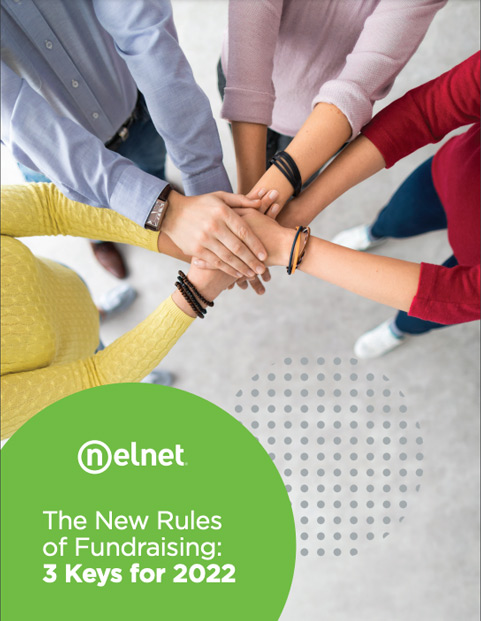Introducing a New World of Fundraising
The fundraising landscape has dramatically changed due to the pandemic and a shift to more activities being remote. Nonprofits throughout the world face the daunting challenge of continuing operations that rely largely on fundraising and charitable giving from a network of donors facing their own financial hardships.
While the last two years have undoubtedly been difficult for nonprofits, they’ve also shown us the incredible creativity of the industry, with many organizations pivoting to new online methods. To keep growing and reaching new goals, nonprofits cannot return to their tried-and-true pre-pandemic tactics. COVID-19 has changed the way we fundraise for good, which means approaching your nonprofit’s 2022 fundraising strategy with a fresh perspective.
The Game Has Changed
The good news is that many nonprofits have been pleasantly surprised by levels of giving during 2020 and 2021, despite the economic downturn. Giving USA’s Annual Report on Philanthropy for the Year 2020 reports that giving in 2020 grew 5.1% for a total of $471.44 billion, bringing charitable giving’s percentage of the GDP to its highest level since at least 1980.
This sense of urgency carried over into 2021. Total giving and number of donors grew by 10% and 6% respectively. November 2021’s Giving Tuesday showed these trends continuing throughout the year, beating all previous fundraising records with a total of $2.7 billion raised in the United States alone, a 9% increase from 2020. Without in-person events to drive fundraising, these unprecedented number of donations came largely from online contributions.
Donors’ habits, motivations, and expectations have changed – and success depends on changing your tactics along with them. Here are some of our top tips for nonprofit fundraising in 2022.

3 Keys to Fundraising
Get Personal
Technology has made it easier than ever to leverage your organization’s data to get the right message to the right person. Having an all-in-one management solution that offers a single source for all member data and interactions, as well as a way to make that data actionable, is crucial to utilizing this information to its full potential. Understanding how to best reach different donor audiences is especially important, as the demographics of donors continue to evolve. Create different personas for these different groups of donors and then deliver your message to them via channels they’re already using.
The “Always On” Mentality
The pandemic accelerated the pace of digital adoption by three years, according to a McKinsey & Company survey. As in-person consumers moved dramatically toward online channels, businesses had to adopt new strategies and practices to stay competitive. By July 2020, 65% of customer interactions were now digital, compared to 41% in December of the previous year. Mobile interactions rose dramatically, accounting for roughly 50% of all web traffic worldwide since 2017, but reached a record 54.8% in 2021, according to a recent report.
When over half of your donors are likely to interact with your organization via their phones, it’s critical to design your 2022 digital fundraising strategy with a mobile-first approach. The rise of mobile technology has brought potential donors closer to causes than ever before, with access to 24/7, year-round fundraising in the palm of their hands. Don’t let a digital strategy that doesn’t prioritize mobile become an obstacle to donations.
Lead with Engagement
The best way to create and keep donors is to make it easy for them to get involved. Before reaching out to donors, make sure you have solutions in place to accept both one-time and recurring contributions. Check with your software partners for their preferred payment partners. Having an expert partner in this process allows you to focus on what you do best – telling your organization’s story.
Not only is engagement important in developing and maintaining a donor base, it’s also a vital part of gaining new donors. Data suggests that most young people’s first engagement with a nonprofit or charitable organization is small, from liking a social media post to sharing a message. Keeping the conversation going after this initial interaction is the key to turning this small show of support into a yearly donation.
Want The Full Report?
Fill out the form below to download the white paper
"*" indicates required fields


